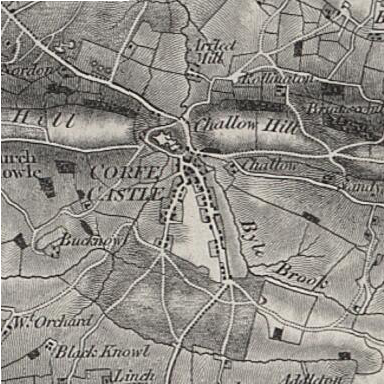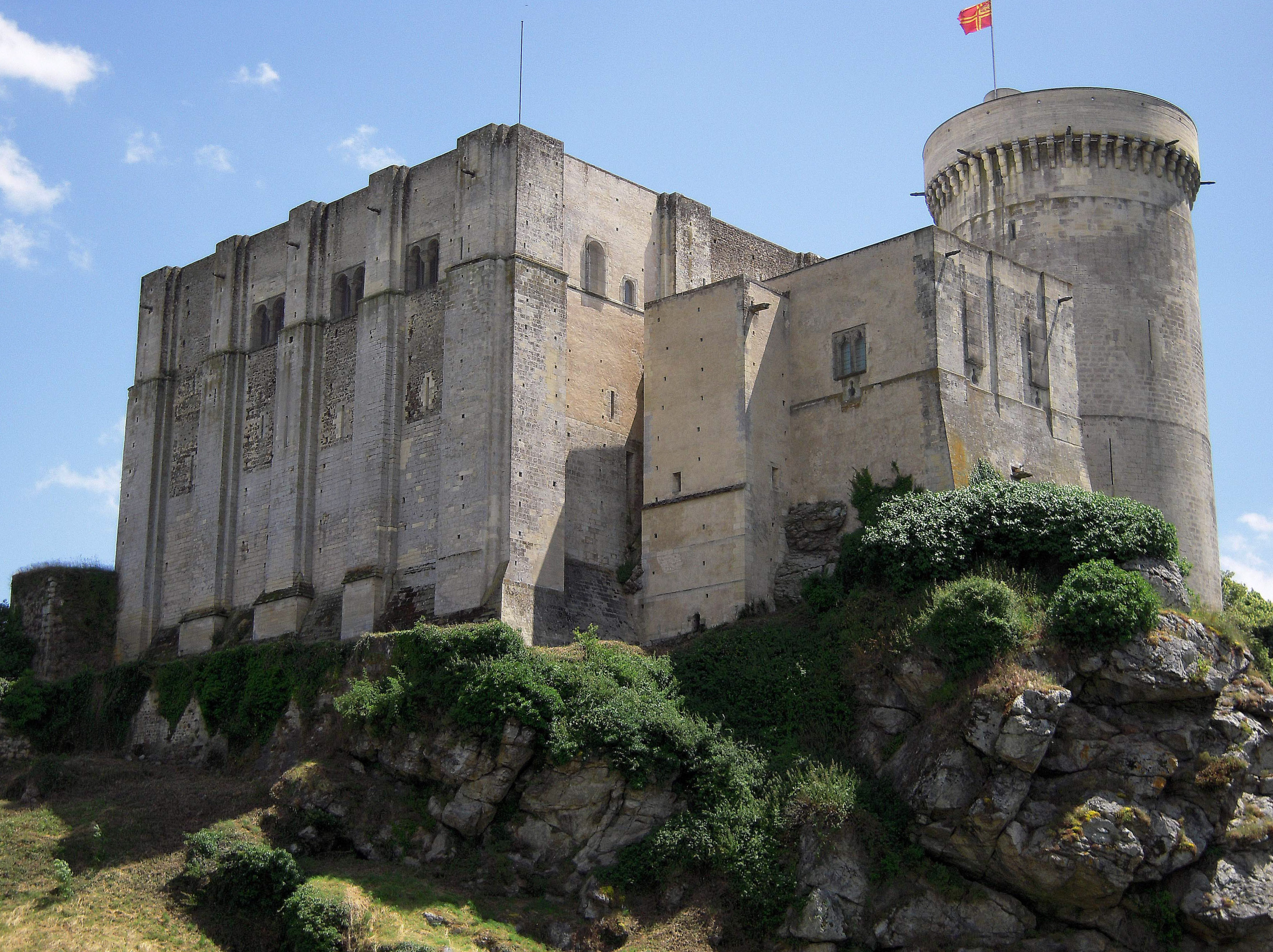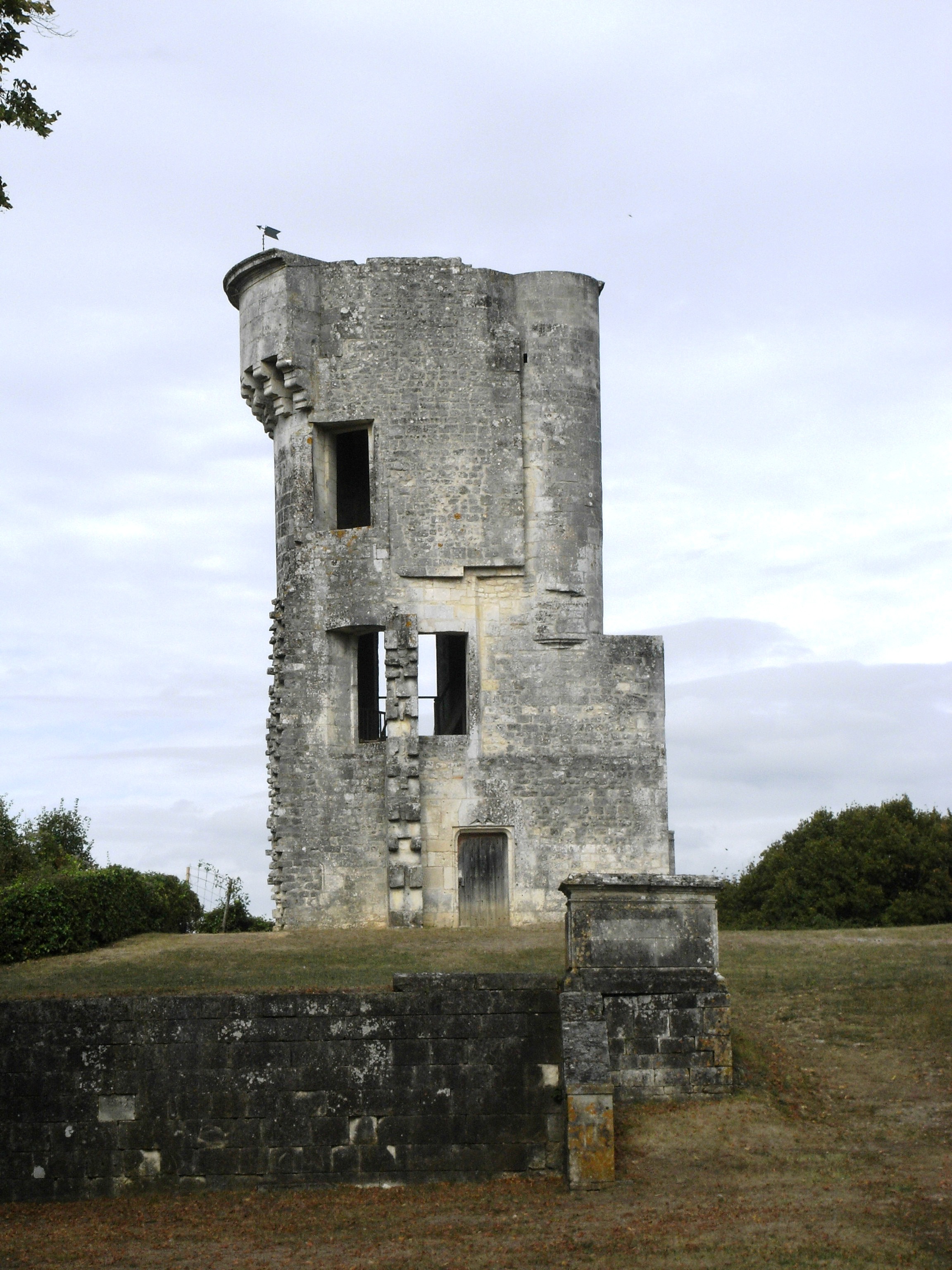|
Alix, Duchess Of Brittany
Alix (also Alis, Alice, and of Thouars; 1200 – 21 October 1221) was Duchess of Brittany from 1203 until her death. She was also Countess of Richmond in the peerage of England. Life Alix was born in 1200. She was the daughter of Constance, Duchess of Brittany, and her co-ruler and third husband, Guy of Thouars. According to several French historians, Constance died after giving birth to Alix's sisters Catherine and Margaret. Alix's older half-brother was Arthur I, Duke of Brittany, and her half-sisters were Eleanor and Matilda of Brittany, the children of Constance by Geoffrey of England. Upon the death of Richard I of England, a power struggle commenced between her half-brother Arthur and John, King of England. At the Battle of Mirebeau in 1202, Arthur and Eleanor were captured. Arthur was imprisoned at the Château de Falaise and in 1203 disappeared. Eleanor was imprisoned at Corfe Castle. The Breton barons recognized Alix as Duchess of Brittany after the presu ... [...More Info...] [...Related Items...] OR: [Wikipedia] [Google] [Baidu] |
Chartres Cathedral
Chartres Cathedral (, lit. Cathedral of Our Lady of Chartres) is a Catholic cathedral in Chartres, France, about southwest of Paris, and is the seat of the List of bishops of Chartres, Bishop of Chartres. Dedicated in honour of the Virgin Mary ('Our Lady'), it was mostly constructed between 1194 and 1220. It stands on the site of at least five cathedrals that have occupied the site since the Diocese of Chartres was formed as an episcopal see in the 4th century. It is one of the best-known and most influential examples of High Gothic and Classic Gothic architecture. It was built above earlier Romanesque architecture, Romanesque basements, while its north spire is more recent (1507–1513) and is built in the more ornate Flamboyant style. "[O]ne of the most beautiful and historically significant cathedrals in all of Europe," it was designated a World Heritage Site by UNESCO in 1979, which called it "the high point of French Gothic architecture, French Gothic art" and a "masterpiece ... [...More Info...] [...Related Items...] OR: [Wikipedia] [Google] [Baidu] |
John, King Of England
John (24 December 1166 – 19 October 1216) was King of England from 1199 until his death in 1216. He lost the Duchy of Normandy and most of his other French lands to King Philip II of France, resulting in the collapse of the Angevin Empire and contributing to the subsequent growth in power of the French Capetian dynasty during the 13th century. The First Barons' War, baronial revolt at the end of John's reign led to the sealing of Magna Carta, a document considered a foundational milestone in English and later British constitution of the United Kingdom, constitutional history. John was the youngest son of King Henry II of England and Duchess Eleanor of Aquitaine. He was nicknamed John Lackland () because, as a younger son, he was not expected to inherit significant lands. He became Henry's favourite child following the failed revolt of 1173–1174 by his brothers Henry the Young King, Richard I of England, Richard, and Geoffrey II, Duke of Brittany, Geoffrey against their ... [...More Info...] [...Related Items...] OR: [Wikipedia] [Google] [Baidu] |
Blanche Of Navarre, Duchess Of Brittany
Blanche of Navarre (1226 – 12 August 1283), also known as Blanche of Champagne, was the daughter of Theobald the Troubador, King of Navarre and Count of Champagne, and his second wife Agnes of Beaujeu. She was a member of the House of Champagne. By her marriage to John I, Duke of Brittany, she became Duchess consort of Brittany. Life Blanche was firstly betrothed to Otto III, Count of Burgundy; the marriage contract was signed on 16 January 1236. However, the engagement was broken. Blanche was instead married in 1236 to John I, Duke of Brittany: the main reason he married Blanche was so he could get Navarre, and Theobald did make John heir to the throne. However, John renounced the claim after Margaret of Bourbon bore Theobald two sons. Marriage and children Blanche and John had: *John II, Duke of Brittany * Peter of Brittany (2 April 1241–Paris, 19 October 1268), Lord of Hade *Alix of Brittany, Dame de Pontarcy *Theobald (1245–1256), died young *Theobald (died soon afte ... [...More Info...] [...Related Items...] OR: [Wikipedia] [Google] [Baidu] |
William Marshal, 1st Earl Of Pembroke
William Marshal, 1st Earl of Pembroke (1146 or 1147 – 14 May 1219), also called William the Marshal (Anglo-Norman language, Norman French: ', French language, French: '), was an Anglo-Normans, Anglo-Norman soldier and statesman during High Medieval England who served five English kings: Henry II of England, Henry II and his son and co-ruler Young Henry, Richard I, John, King of England, John, and finally Henry III of England, Henry III. Knighted in 1166, William Marshal spent his younger years as a knight errant and a successful tournament (medieval), tournament competitor; Stephen Langton eulogised him as the "best knight that ever lived." In 1189, he became the ''de facto'' earl of Pembroke through his marriage to Isabel de Clare, 4th Countess of Pembroke, Isabel de Clare, whose parents were Aoife MacMurrough and Richard de Clare, 2nd Earl of Pembroke, Richard de Clare, 2nd Earl of Pembroke. The title of earl was not officially granted until 1199, and is considered to be the ... [...More Info...] [...Related Items...] OR: [Wikipedia] [Google] [Baidu] |
Yolande Of Brittany
Yolande of Brittany (late 1218 – 10 October 1272), also known as Yolande de Dreux, was the ruler of the counties of Penthièvre and Porhoet in the Duchy of Brittany. Yolande had been betrothed to King Henry III of England in 1226 at the age of seven years, but married Hugh XI of Lusignan, the half-brother of Henry III. Through Hugh, she became Countess of La Marche and of Angoulême. She was the mother of seven children. From 1250 to 1256, she acted as Regent of La Marche and Angoulême for her son, Hugh XII of Lusignan. Life Yolande was born in Dreux, France at the end of 1218, the only daughter of Alix, Duchess of Brittany, and her husband Pierre de Dreux. She had two brothers, John I, Duke of Brittany and Arthur of Brittany (1220–1224). By her father's second marriage to Nicole, she had a half-brother, Olivier de Braine (1231–1279). Her mother, Alix, had died on 21 October 1221, when Yolande was not quite three years old. Yolande's paternal grandparents were Robert I ... [...More Info...] [...Related Items...] OR: [Wikipedia] [Google] [Baidu] |
Corfe Castle
Corfe Castle is a fortification standing above the Corfe Castle (village), village of the same name on the Isle of Purbeck peninsula in the English county of Dorset. Built by William the Conqueror, the castle dates to the 11th century and commands a gap in the Purbeck Hills on the route between Wareham, Dorset, Wareham and Swanage. The first phase was one of the earliest castles in England to be built at least partly using stone when the majority were built with earth and timber. Corfe Castle underwent major structural changes in the 12th and 13th centuries. In 1572, Corfe Castle left the Crown's control when Elizabeth I sold it to Sir Christopher Hatton. Sir John Bankes bought the castle in 1635, and was the owner during the English Civil War. While Bankes was fighting in London and Oxford, his wife, Lady Mary Bankes, led the defence of the castle when it was twice besieged by Roundhead, Parliamentarian forces. The first siege, in 1643, was unsuccessful, but by 1645 C ... [...More Info...] [...Related Items...] OR: [Wikipedia] [Google] [Baidu] |
Château De Falaise
The Château de Falaise is a castle from the 12th–13th century, located in the south of the commune of Falaise ("cliff" in French) in the ''département'' of Calvados, in the region of Normandy, France. William the Conqueror, the son of Duke Robert of Normandy, was born at an earlier castle on the same site in about 1028. William went on to conquer England and become king, and possession of the castle descended through his heirs until the 13th century, when it was captured by King Philip II of France. Because of his association to the location (though not the existing physical structure) it is also known as Château Guillaume le Conquérant or William the Conqueror's Castle. Possession of the castle changed hands several times during the Hundred Years' War. The castle was abandoned during the 17th century. Since 1840 it has been protected as a . History On the death of Richard II, Duke of Normandy, in August 1026 his son (also called Richard) succeeded to the du ... [...More Info...] [...Related Items...] OR: [Wikipedia] [Google] [Baidu] |
Battle Of Mirebeau
The Battle of Mirebeau was a battle in 1202 between the House of Lusignan-Breton alliance and the Kingdom of England. King John of England successfully smashed the Lusignan army by surprise. Background After Richard I's death on 6 April 1199 there were two potential claimants to the Angevin throne: John, whose claim rested on being the sole surviving son of Henry II, and Arthur I of Brittany, who held a claim as the son of Geoffrey, John's elder brother. Richard appeared to have started to recognise John as his legitimate heir in the final years before his death, but the matter was not clear-cut and medieval law gave little guidance as to how the competing claims should be decided. With Norman law favouring John as the only surviving son of Henry II and Angevin law favouring Arthur as the heir of Henry's elder son, the matter rapidly became an open conflict. John was supported by the bulk of the English and Norman nobility and was crowned at Westminster Abbey, backed by hi ... [...More Info...] [...Related Items...] OR: [Wikipedia] [Google] [Baidu] |
Richard I Of England
Richard I (8 September 1157 – 6 April 1199), known as Richard the Lionheart or Richard Cœur de Lion () because of his reputation as a great military leader and warrior, was King of England from 1189 until his death in 1199. He also ruled as Duke of Normandy, Duke of Aquitaine, Aquitaine, and Duchy of Gascony, Gascony; Lord of Cyprus in the Middle Ages, Cyprus; Count of Poitiers, Counts and dukes of Anjou, Anjou, Count of Maine, Maine, and Count of Nantes, Nantes; and was overlord of Brittany at various times during the same period. He was the third of five sons of Henry II of England and Eleanor of Aquitaine and was therefore not expected to become king, but his two elder brothers predeceased their father. By the age of 16, Richard had taken command of his own army, putting down rebellions in Poitou against his father. Richard was an important Christian commander during the Third Crusade, leading the campaign after the departure of Philip II of France and achieving sev ... [...More Info...] [...Related Items...] OR: [Wikipedia] [Google] [Baidu] |
Geoffrey II, Duke Of Brittany
Geoffrey II (; , ; 23 September 1158 – 19 August 1186) was Duke of Brittany and Earl of Richmond between 1181 and 1186, through his marriage to Constance, Duchess of Brittany. Geoffrey was the fourth of five sons of Henry II of England and Eleanor of Aquitaine. Life In the 1160s, Henry II began to alter his policy of indirect rule in Brittany and to exert more direct control. Henry had been at war with Conan IV, Duke of Brittany. Local Breton nobles rebelled against Conan, so Conan sought Henry II's help. In 1164, Henry intervened to seize lands along the border of Brittany and Normandy and, in 1166, he invaded Brittany to punish the local barons.Everard (2000), p. 42. Henry then forced Conan to abdicate as duke and to give Brittany to his five-year-old daughter, Constance, who was handed over and betrothed to Henry's son Geoffrey. This arrangement was quite unusual in terms of medieval law, as Conan might have had sons who could have legitimately inherited the duchy. Ge ... [...More Info...] [...Related Items...] OR: [Wikipedia] [Google] [Baidu] |
Arthur I, Duke Of Brittany
Arthur I (; ) (29 March 1187 – presumably 1203) was 4th Earl of Richmond and Duke of Brittany between 1196 and 1203. He was the posthumous son of Geoffrey II, Duke of Brittany, and Constance, Duchess of Brittany. Through Geoffrey, Arthur was the grandson of King Henry II of England and Duchess Eleanor of Aquitaine, and the nephew of King Richard I of England. In 1190, Arthur, whose father had died, was arguably designated heir to the throne of England and its French territory, but as he was dying in 1199, Richard I named his youngest brother John heir to the throne, as Arthur was still just a child. Philip II of France thought to make use of a potential succession crisis in England and Brittany and for awhile Arthur joined him. Nothing is recorded of Arthur after his imprisonment by John in Rouen Castle in 1203. While his precise fate is unknown, it is generally believed he was killed by John. Early life Arthur was born in 1187, the son of Duchess Constance and Duke Geof ... [...More Info...] [...Related Items...] OR: [Wikipedia] [Google] [Baidu] |







